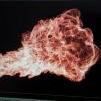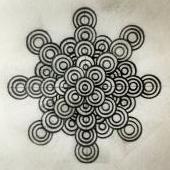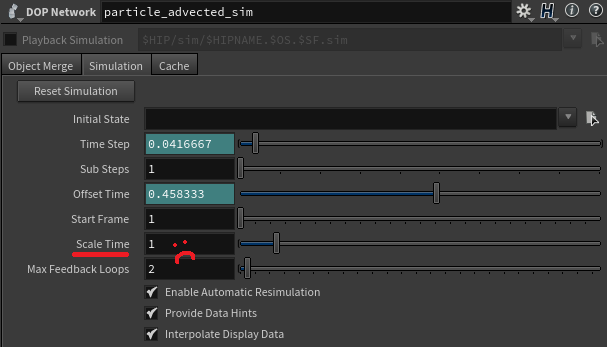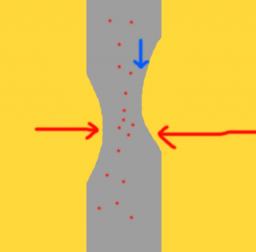Search the Community
Showing results for tags 'speed'.
-
I created a rather complex Digital Asset. It consticts of ~2000 nodes, and also there is ~60 instances of another asset inside this asset. I optimized it thought cleaning nodes throught performance monitor, and now It computes rather fast after loading, but LOADING takes nearly 10 seconds. It's became a real problem because in my hip file I need to use it rapidly many times. Is there any way to speed up loading of asset? And after creating every instance of this asset Houdini increases ram usage at ~500 mb, it's also a problem...
-
Hey guys! I need to kill particles that have little/no movement. The trouble with killing by velocity is the particles that are moving, are varying in the axis they're moving in so I can't just kill @P.y ? Any suggestions? Is it maybe possible to get each a particles speed of some sort?
-
Hi; In a particle fluid simulation, I add velocity using "point vop". The problem is the particles start to move very fast from beginning, but I want they start to move by ease. How cant I increase particle's speed (velocity), over time? Thanks. Fluid_Velocity.hip
-
Hey magicians, I'm working on a flip river wich I need to have color attribute, followed H16 Flip Masterclass and get there, but then I tried to add color in several ways but I can't get it working. I tried adding a sop solver to dops with attribute transfer, but the color didnt worked on the motion. Also tried making source volume with points from volume with uv texture but velocity gets weird. Working river without CD Cd particles with weird velocity Any tips on how to fix this? attaching a hip. Thanks in advance flip_issue.hip
-
Link to tutoial -> https://gum.co/imSYS In this comprehensive stand alone tutorial we will go over how to set up scene-scale clustered pyro simulations and blend them together post-simulation to make it appear as if it is one large simulation. This process will lower simulation time, allow for higher resolutions, and be more efficient when saving to disk because there are fewer voxels. This process will also optimize large scale pyro scenes, so that simulations are only calculated where absolutely necessary and blend them together so that it appears as if it is the same volume. This tutorial comes with all digital assets, a documented and fully set up file as well as a starter file for following the tutorials along the same as I work through them. An intermediate tutorial for those looking to speed up their pyro workflow, learn some VEX and create massive sims. Includes a documented scene file and all digital assets! Hope to see everyone leveraging these optimizations in the future to create massive simulations and squeeze in those extra few iterations before deadlines! You can reach me at trzankofx@gmail.com for questions or comments.
-
- 1
-

-
- smoke houdini fire
- optimizations
-
(and 12 more)
Tagged with:
-
Hi, i'm working on an explosion scene with pyro that existing from pop trails. but when i simulating my pyro, the area of sim is going bigger so much and killing me. i think there is a way like on that video is there any way to make multi containers like clustering my rbd explosion as like that for speed up sim? i attached the hip file that i found on web and learning from it. Rbd_Explosion_With_Smoke.hip
-
Hi everyone! Just a quick question out of interest. Speaking very generally, fluids usually take longer to compute/sim/render than other types of sim(e.g. rdb). Just wondering why from a technical point of view? Is it anything to do with equations used to compute it? or i guess more particles stuff in the scene? I've just seen how vague and ridiculous this question might sound but any info on this would be really interesting! Thanks in advance!
-
Hello Pals, Hope you all are having a great year so far. I am trying to do a shot with particles which needs slow motion on a certain camera moment. Basically, I just want to slow down the motion of my particles for few frames. I dont want to mess with the velocity etc as I really like the motion of my sim. I looked into time-shift, time-warp etc. But they always feel like a cheat and not much of a high quality solution. There is a "Scale Time" option on the POP net. But for some odd reason its locked and we cant key-frame it at all. That would have been the best solution, where we can just lower the timescale for bunch of frames and then resume it in normal speed. Can anyone just give me a brief why Sidefx would want to make this such a big deal and lock it on POP nets? Thank-you and have a great day! HD
-
In this tutorial we will go over how to set up optimized pyro clustering with oriented DOP containers in Houdini given a piece of geometry moving through a scene. This process will lower simulation time and be more efficient when saving to disk because there are fewer voxels. Link to Tutorial -> https://gum.co/TqUNR We first go over how to get things set up quick and easy and in the second half of the tutorial we make further optimizations using VEX. We'll look at how to rewrite cluster points to do exactly what we need it to, which includes rewriting the resample sop using VEX. An intermediate tutorial for those looking to speed up their pyro workflow and learn some VEX. Includes the scene file! Hope to see everyone leveraging these optimizations in the future and squeezing in those extra few iterations before deadline! You can reach me at trzankofx@gmail.com for questions or comments.
-
This operator allows you to run an OpenCL kernel as part of your SOP network. Depending on the GPU, some operators can be orders of magnitude faster than even VEX. In this case the OpenCL code is 144 times faster than VEX on GTX 970.
- 10 replies
-
- 14
-

-
Hello! I'm animating a burning match, and here is my problem : The ignition starts too slowly, even if I set up a fast fire. Is there a way too fix this? This is the kind of ignition I would like to make : Thank you!
-
Hello all, I made an animation with a solver but it runs too fast, I tried time shift sop but kinda loses quality, what I want is a slower animation but without losing frames, I'm new to houdini, tried with chops but I know im doing something wrong (ideally I would like to drive the animation with sound, but for now lets just slow down the thing) Here is the animation https://giphy.com/gifs/3oriOdRr84Fx3nUl6E I want the lines go slower but without taking out keyframes, slow and smooth, any suggestions? Thanks!
-
Smoothing geometry on the GPU using OpenCL. In VEX it has to be done in 2 steps where the same thing can be achieved in OpenCL in one step using barriers [khronos.org]. For a 822K polygon model, it's over 500 times faster than VEX on GTX 970 for 1000 iterations, and over 600 times faster for 10K iterations. Timings are recorded separately as there seems to be some overhead when running them one after another. Special thanks to SESI.
-
Hey guys, Is there a way to control the FLIP's particles velocity based on the normals of a scene object? To be more specific: I have this grid and as soon as the particles get closer to it's surface, the particles start flowing on this grid's normals direction. Thx, Alvaro FLIP normal vel.rar
-
Hello, I think I've just blown my head trying to figure out a solution for this but I hope you can help me I made a simulation of water and whitewater in Houdini and then used alembic to send the mesh to Maya for rendering. The whitewater particles were sent via the Realflow connectivity plugin in .bin format. Maya had no problem opening both the water mesh and the whitewater particles, but my problem is that Maya can't compute any motion blur, I think this is because the files I exported do not have any motion vector information in them. Is there any way I can export this information and use it in Maya? To export the water mesh, I created the simulation and then I exported it to .bgeo sequence from the import node, then I re imported the .bgeo sequence in a new geometry file and created the mesh using the "particle fluid surface node" and from there I connected a ROP alembic output node. To export the white water I got into the whitewater source node and in that level I created the RF Particle Export node and in it's properties I referenced whitewatersource.cache in the SOP Path Also, I saw a video where v-ray proxy import is used to generate motion blur with some realflow mesh with the same problem, I don't know if I can do the same in Arnold, which is what I'm using for rendering. I'm quite new to the software but I'm loving it, if you can help me I'll appreciate it. Thanks.
-
Hello! I haven't seen a resource that benchmarks the calculation speed of graphics cards in Houdini so I thought I'd post this. I hope that people can participate and post their scores using their gaming/workstation graphics cards so other people can get a rough idea of the performance of each graphics card in Houdini before they decide to buy/upgrade anything. This should only take a few minutes - 1. Start Houdini 2. Use the following units under your Hip File Options - Unit Length - 1 Unit Mass - 1 3. Frame Range 1-240 @ 24fps 4. Add a sphere at origin 5. Goto the Pyro FX shelf tool and select Explosion. Select the sphere. 6. Disable Cache Simulation in your DOP and use the following settings - Pyro Container Settings Division size - 0.075 Size - 7.5, 10, 7.5 Center - 0, 4, 0 Resize Container Settings Padding 0.3 Subtract Threshold 0.2 9. Select the Pyrosolver. In the Advanced tab, turn on OpenCL 10. Save the file and restart your computer 11. Use a stopwatch or http://www.online-stopwatch.com/ to keep track of the time 12. Open the file, start the sim and the stopwatch timer 13. Record the time after 240 frames. 14. Run the same sim again but with OpenCL disabled 15. Post the exact times with your PC Specs, Houdini version and OS in the following format (using my results as an example) - Houdini Version - 14.0.201.13 OS - Windows 7 Ultimate x64 GFX - Zotac 770GTX Amp! Edition (2GB) / Driver - 347.09 Time - 1:37.222 CPU - Intel i7 3770K @ stock Time - 2:09.503 Other - ASRock z77 Pro3 Motherboard, 32 GB Corsair Vengeance RAM Thank you! PS - I've attached a hip file with the above settings using Houdini 14 that you can run right away. Thanks for the suggestion, Skybar. OpenCL_TestFile.hipnc
-
Hello everyone, I am trying to create an effect for a project where particle is moving in a tube with constant speed. What I need is to particle gets slow down at crushed cross section (shown by red arrow in image ) and then move ahead at normal speed. Any pointers to achieve this will be helpful. I have attached a reference image to get better understanding. Thanks in advance.
-
Hi everyone, I am building the effect of a waterdrop running on a vertical surface (bottle or whatever). I have curve as path and we raySOP I project it to the surface. Using a portion of the curve to running from the top to the bottom but what I want to be able to animate the speed, or even better using the speed mask based on surfaces normals at Y. In the attached hip I have a test-setup with a vertical surface with noise and speed mask on its color. Wherever is black drop should travel faster and wherever is white slower. I am using two different techniques for the travelling of line with a switch. Any ideas? Thanks in advance! EDIT: What I am using for travelling the line is a duration, let say in 200frames finish the ride, but what I want to have is a constant speed and then be able to multiply this with an attribute as the speed mask. I would like to keep everything in SOPs if possible but I am also considering POPs. speed_mask_800.hip
-
Hey all! Long-time lurker, first-time poster. I've learned so much from OdForce. Thank you all for everything you've done! I'm having a bit of an issue with fast-moving smoke simulation I'm trying to do. I've tried upping the substeps in addition to having the source geomerty strretch along it's path of animation. The particles emitting seem to work alright but the volume just isn't showing up. If you leave the noise-field on, you'll see that it's definitely emitting, but when you turn it off you won't see any smoke. Any ideas? I've attached the file. Thanks so much! plasma_Smoke_trail_004.hipnc















